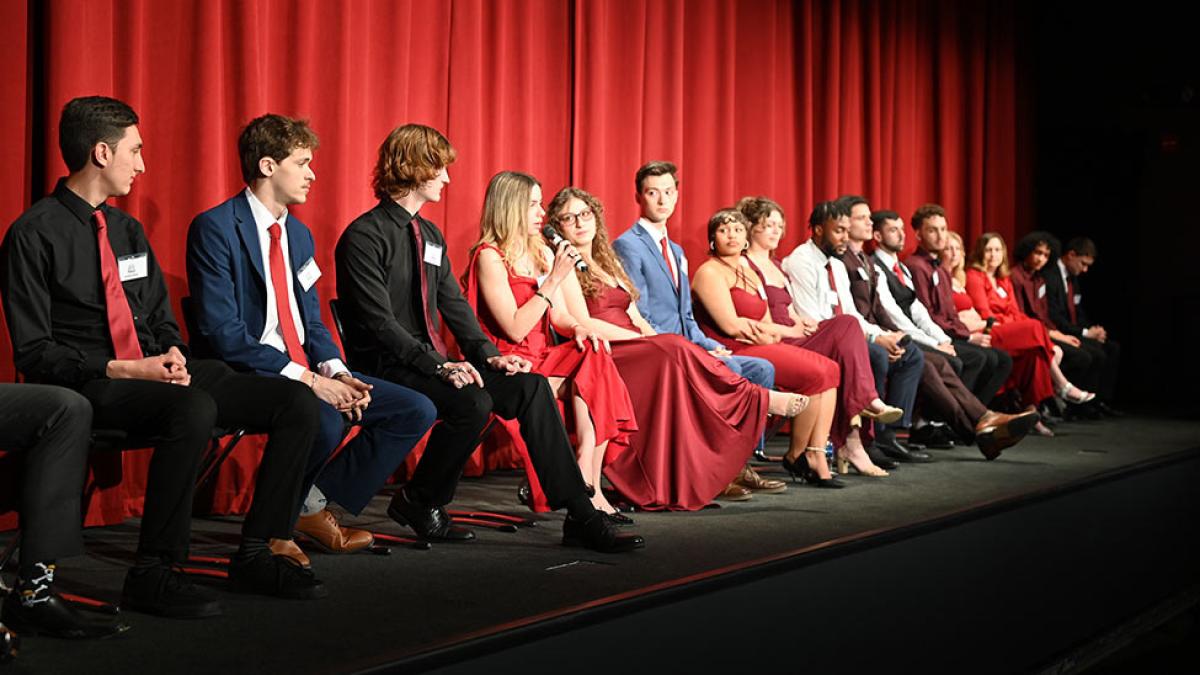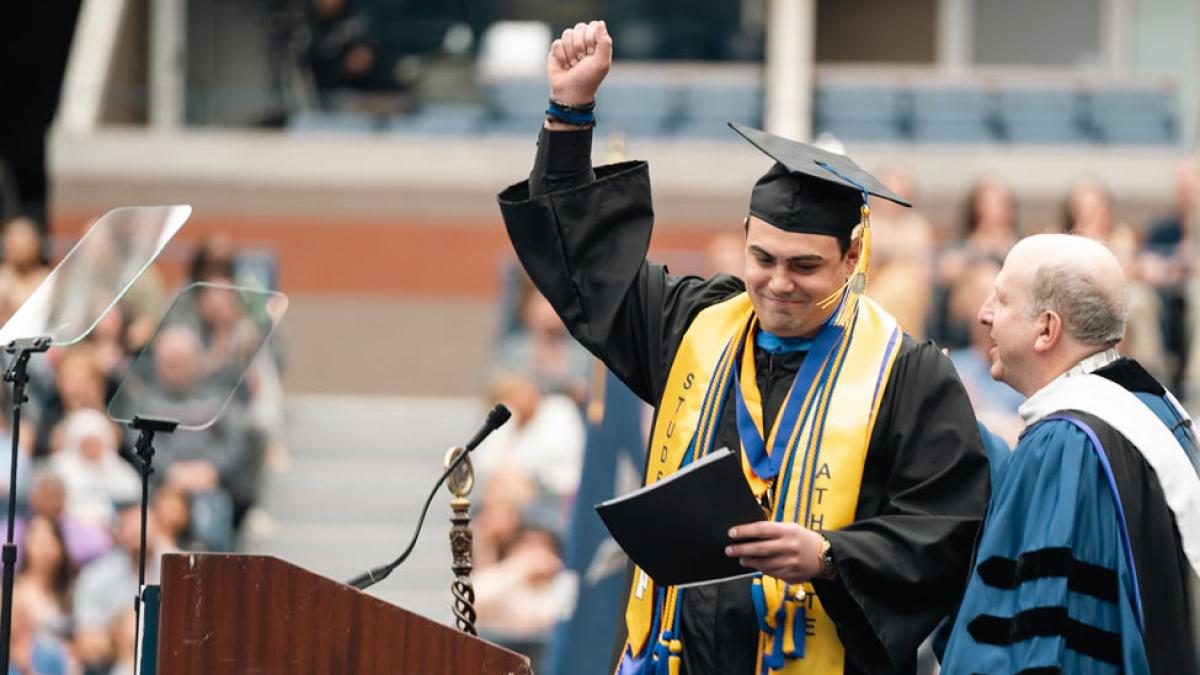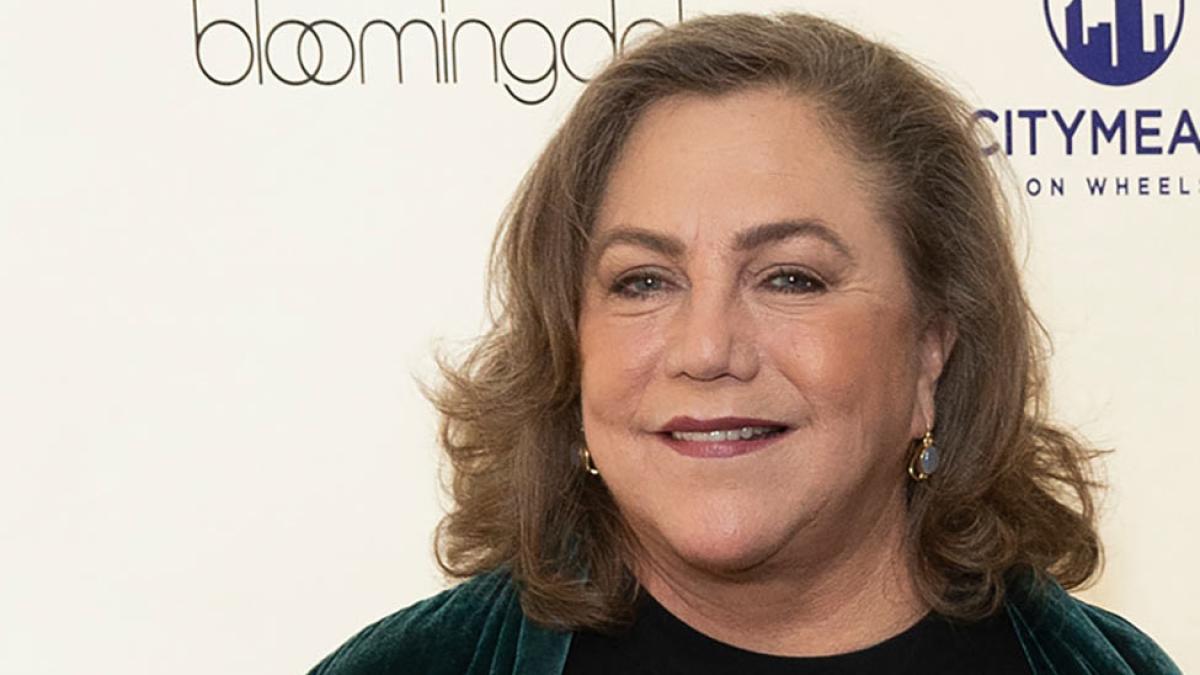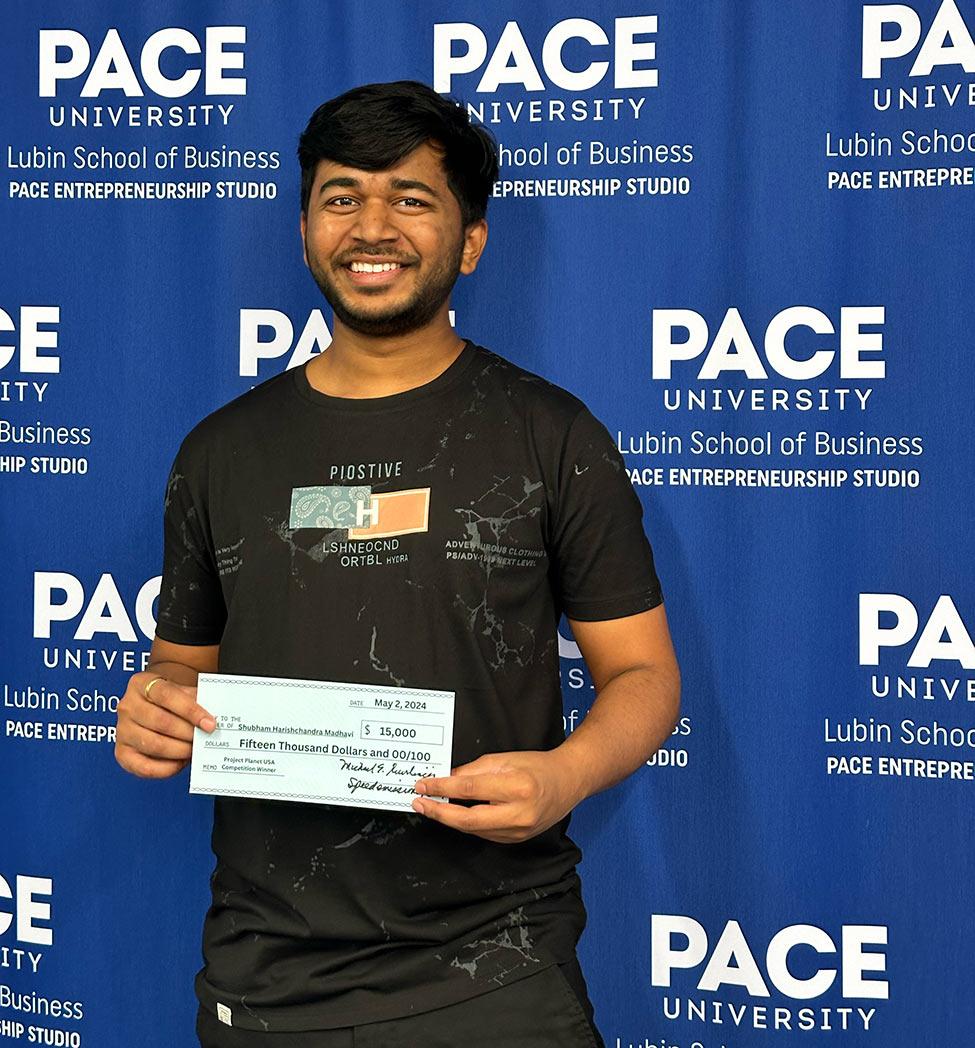
Sean Harris' Family Files Civil Rights Suit Against Clarkstown, Police Over Standoff Death
Elisabeth Haub School of Law Professors Randolph McLaughlin and Debra Cohen, representing the family of Sean Harris have filed a federal civil rights complaint against Clarkstown, Rockland County, and several first responders who were involved in a standoff that preceded the death last year of the 19-year-old.
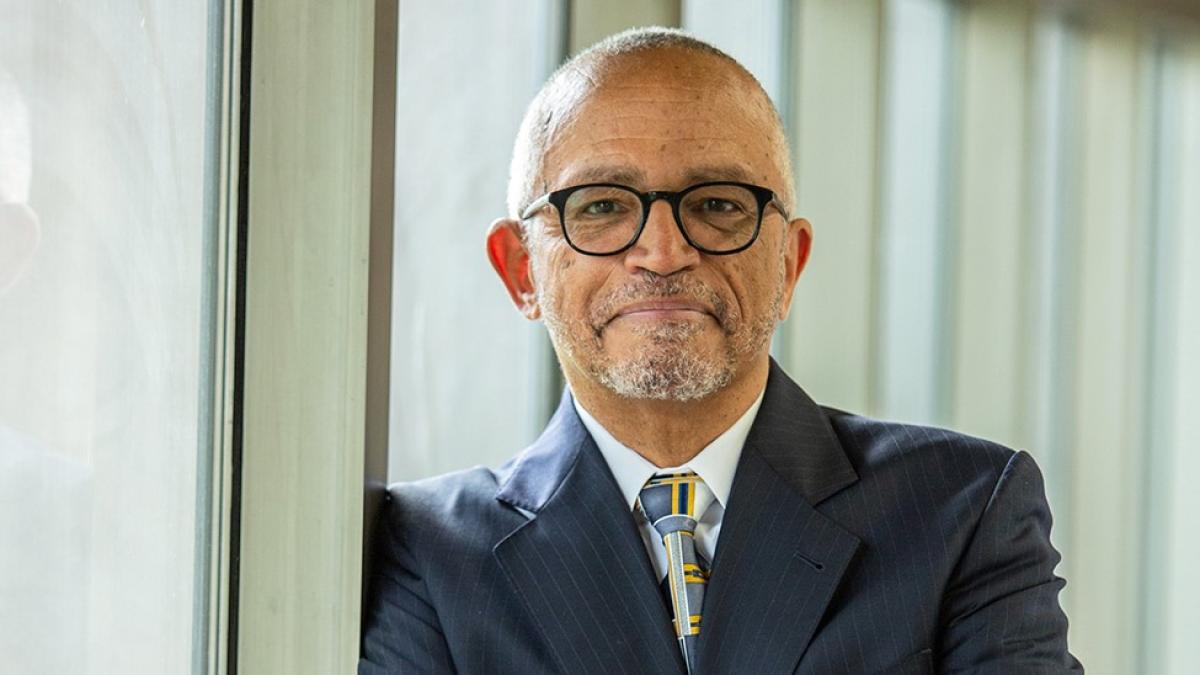
Harnessing The Power Of Sports For Global Diplomacy
Pace University President Marvin Krislov writes in Forbes about the unique role sports can play in diplomacy and the opportunities they provide to better understand and appreciate different cultures.
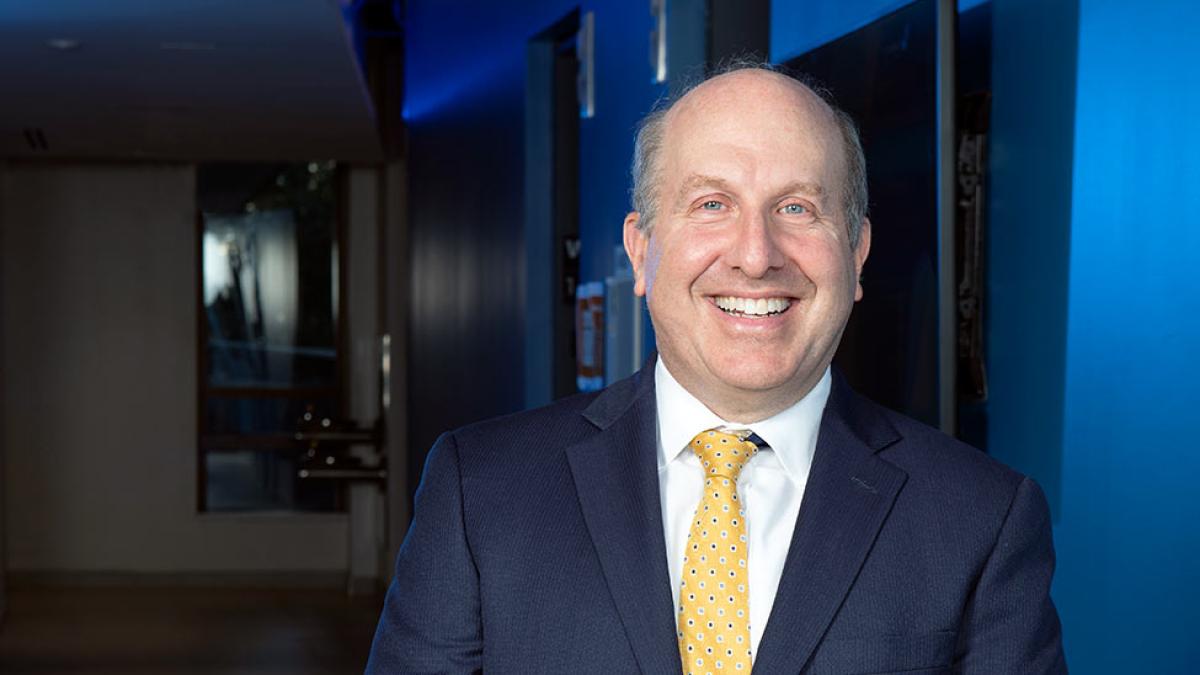
Moons, Fire and Pigs: Emojis Can Be Confusing In Court
Pace University Professor Leslie Garfield Tenzer was featured in a American Bar Association article for her Legal Emoji Dictionary, a helpful resource in courtroom litigation and the first of its kind. “An older person looks at an eggplant and sees a vegetable, but someone younger sees a penis,” Tenzer says. “It really becomes an issue if in a case the decision-maker is an older jury or an older judge. They may interpret the meaning differently from the individual who used it in their conversation.”
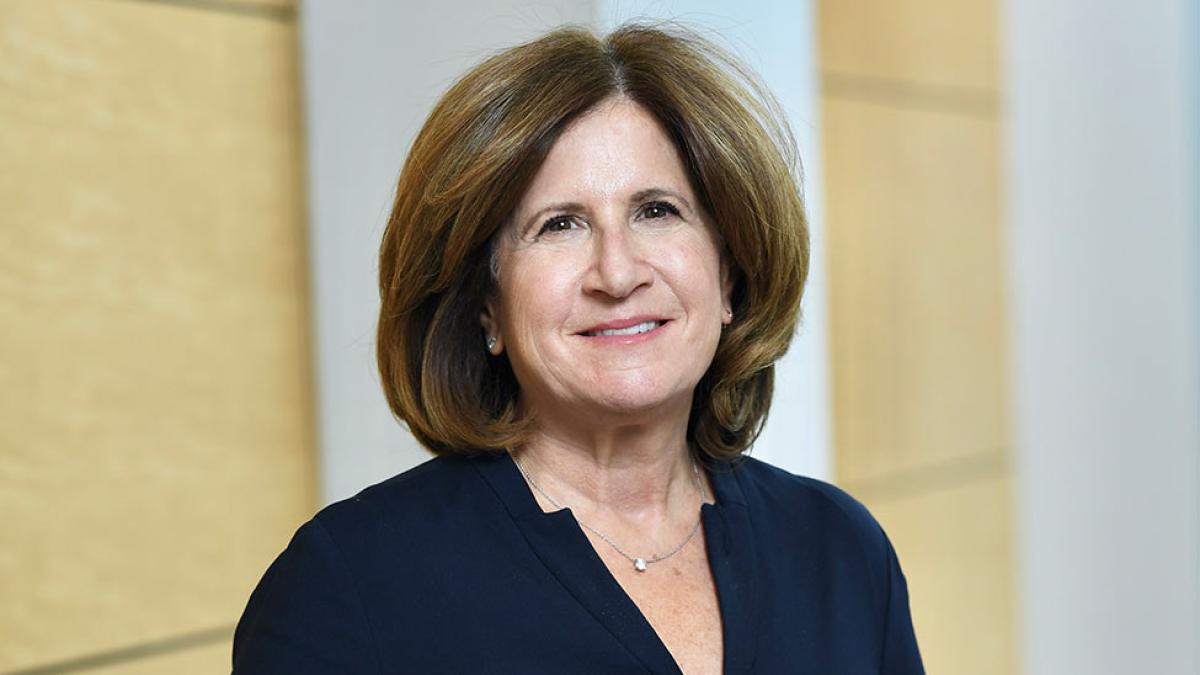
Win For Trump, Surprise On Abortion: Takeaways From Historic Supreme Court Term
Pace | Haub Environmental Law Professor Josh Galperin spoke with USA Today about how the Supreme Court’s overturning of the Chevron ruling shifts regulatory authority from agencies to courts, calling the decision “troubling.”
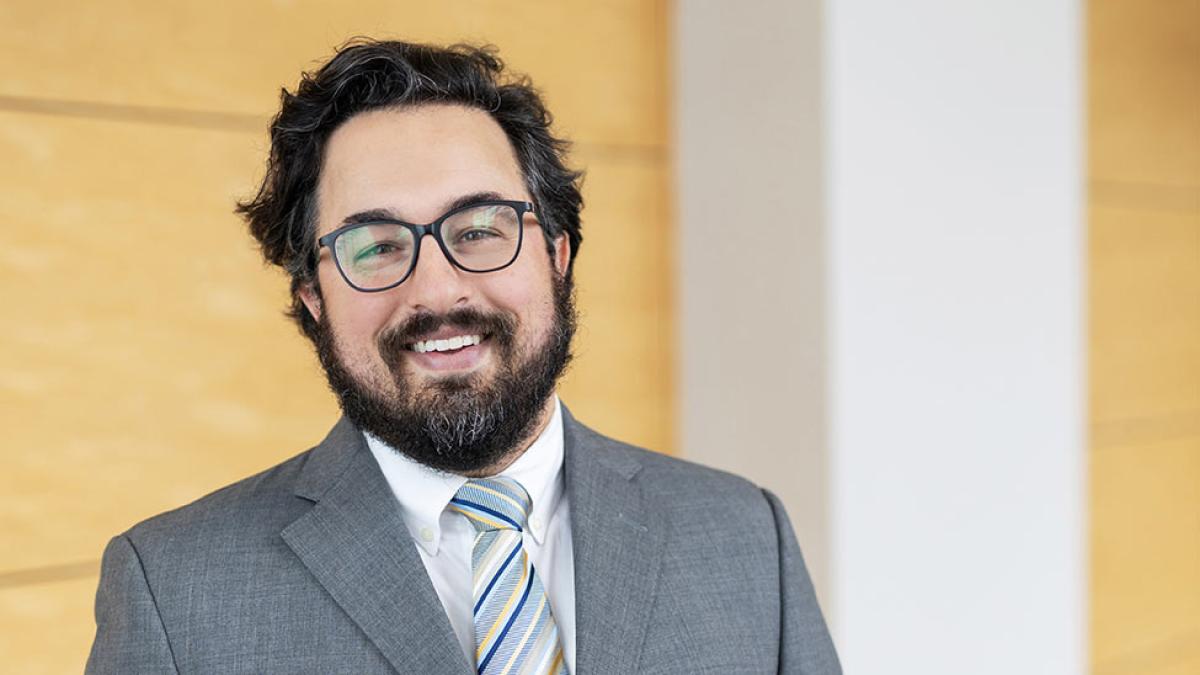
A Little-Noticed Supreme Court Opinion That Could Bring Huge Consequences
Pace University’s Haub Law Professor Bennett Gershman examines “A Little-Noticed Supreme Court Opinion That Could Bring Huge Consequences” in an article for the New York Law Journal.
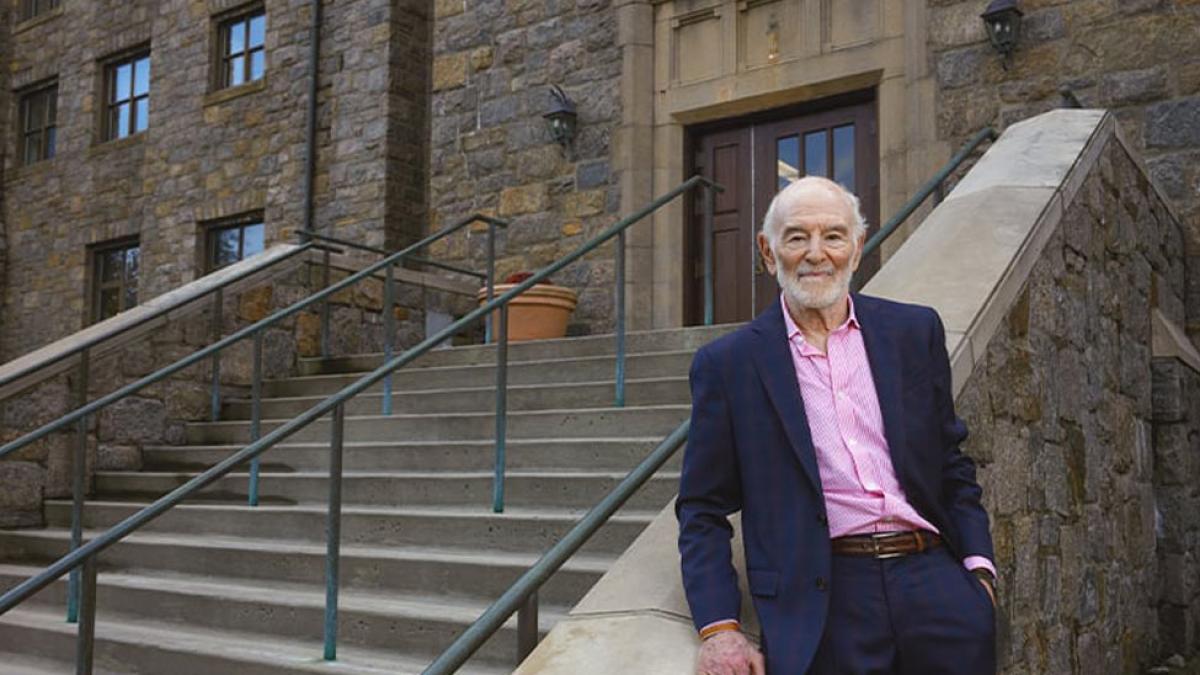
Fighting Climate Change with Brainpower
With projects designed to restore our ocean’s coral reefs and improving clean water accessibility–and two $15,000 grants to boot–Pace students are generating creative solutions to combat climate change.


Traditionally, superheroes wear capes. But in this day and age, the individuals saving the world are the ones who are tackling our planet’s most dire threat head-on: climate change.
Pace students, naturally, are ready to do their part. Through the Project Planet USA competition—an initiative hosted by the Lubin School of Business and The Front Yard at Pace University, students and faculty were encouraged to submit their concepts, innovative ideas, or solutions aimed at addressing climate change for a chance to win a cash grant in the amount of $15,000, plus professional mentoring, public relations, and network connections.
Unsurprisingly, a number of Pace students–Seidenberg’s Shubham Madhavi ‘24 and College of Health Professions’s Danielle Hanson ’24, Nisha Troupe ’24, Anjienna Lowtan ‘24– rose to the challenge and were awarded the big prize.
Their ideas, both ingenious and impactful, may very well make major waves to usher in a greener, more sustainable future.
The Bio-Brick Revolution

Every cloud has a silver lining. Seidenberg graduate student Shubham Harishchandra Madhavi is taking this proverb to new heights; he’s hoping to take the plastic that has made its way into the ocean into special bio-bricks, designed to restore coral reefs.
“My winning concept revolves around the creation of bio-bricks harvested from ocean plastic, which have the remarkable ability to convert CO2 into coral-restoring nutrients," Shubham explains. “This innovative approach not only addresses the urgent need to tackle plastic pollution in our oceans but also contributes to the restoration of coral reefs, which are vital ecosystems threatened by climate change.”
With the support of the grant and accompanying mentoring, Shubham envisions tangible impacts rippling across oceans and coastlines worldwide.
"By removing ocean plastic and converting it into bio-bricks, we directly mitigate the harmful effects of plastic pollution on marine life and ecosystems," he says.
Naturally Shubham's ambitions extend far beyond the confines of the grant period. His long-term goals are as vast as the ocean itself, encompassing the scaling up of bio-brick production, the expansion of the project to distant shores, and the integration of his innovation into existing reef restoration efforts. As Shubham charts a course towards a greener tomorrow, he’s helping to rebuild our oceans purposefully; one bio-brick at a time.
Hope in a Barrel
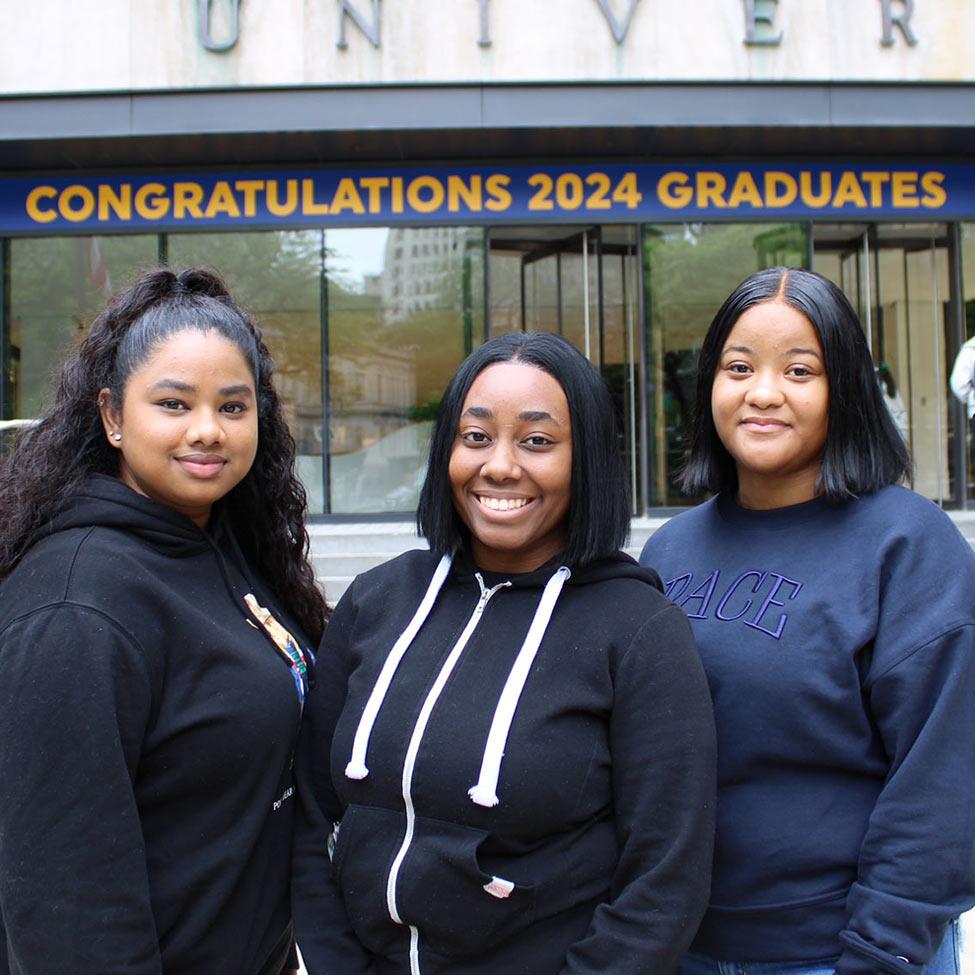
Nisha Troupe, Anjienna Lowtan, and Danielle Hanson, are on a mission to revolutionize clean water accessibility.
"It all started with our Health Science program," says Nisha. "We delved into global health discrepancies, and one glaring issue stood out: access to clean water."
Their winning concept? A barrel filtration system designed to harness rainwater, purify it, and provide communities with a sustainable source of clean water.
"We realized that by tapping into rainwater, we could alleviate the strain on traditional water sources," Anjienna explains. "This means reducing energy-intensive processes like pumping and treating water, ultimately curbing carbon emissions."
The trio envisioned their project not just as a solution but as a catalyst for change, with specific outcomes aimed at amplifying its impact. Scaling up implementation, refining filtration technology, forging partnerships—these were just a few steps towards their overarching goal: ensuring clean water for all, regardless of geographical or socioeconomic barriers.
Their long-term vision goes beyond the grant period, to a future wherein water scarcity was a thing of the past and where communities can thrive in harmony with nature.
"We're not just providing water; we're paving the way for sustainable solutions," Danielle says. "By harnessing technology and fostering community engagement, we're rewriting the narrative of water scarcity."
Learn more about The Front Yard program at Pace University, an educational platform that aims to build the most advanced toolbox for Pace University students, alumni, and faculty to support their entrepreneurial and innovative endeavors.
More from Pace Magazine
Discover incredible stories that showcase the amazing achievements and initiatives happening at Pace. From top rankings to groundbreaking programs and student journeys, there’s something to inspire everyone.
From the uplifting words of LaChanze to the accolades for our esteemed honorees, Pace University's Commencement was a day to remember. We celebrated 4,093 graduates at the USTA Billie Jean King National Tennis Center, marking a new chapter filled with promise and potential.
Pace’s Sands College of Performing Arts is getting a brand new, state-of-the-art Performing Arts Center at One Pace Plaza East. This ambitious project will feature cutting-edge classrooms, creative arts spaces, and a premier Performing Arts Center, making Pace University a hub for the arts.
Hands-On Learning with Real, Small Businesses
For the past five years, Professor Kathy Winsted’s digital marketing students have partnered with small businesses to audit their digital marketing strategies. Check out how this class project delivers real-world impact for businesses and provides invaluable hands-on experience for students.
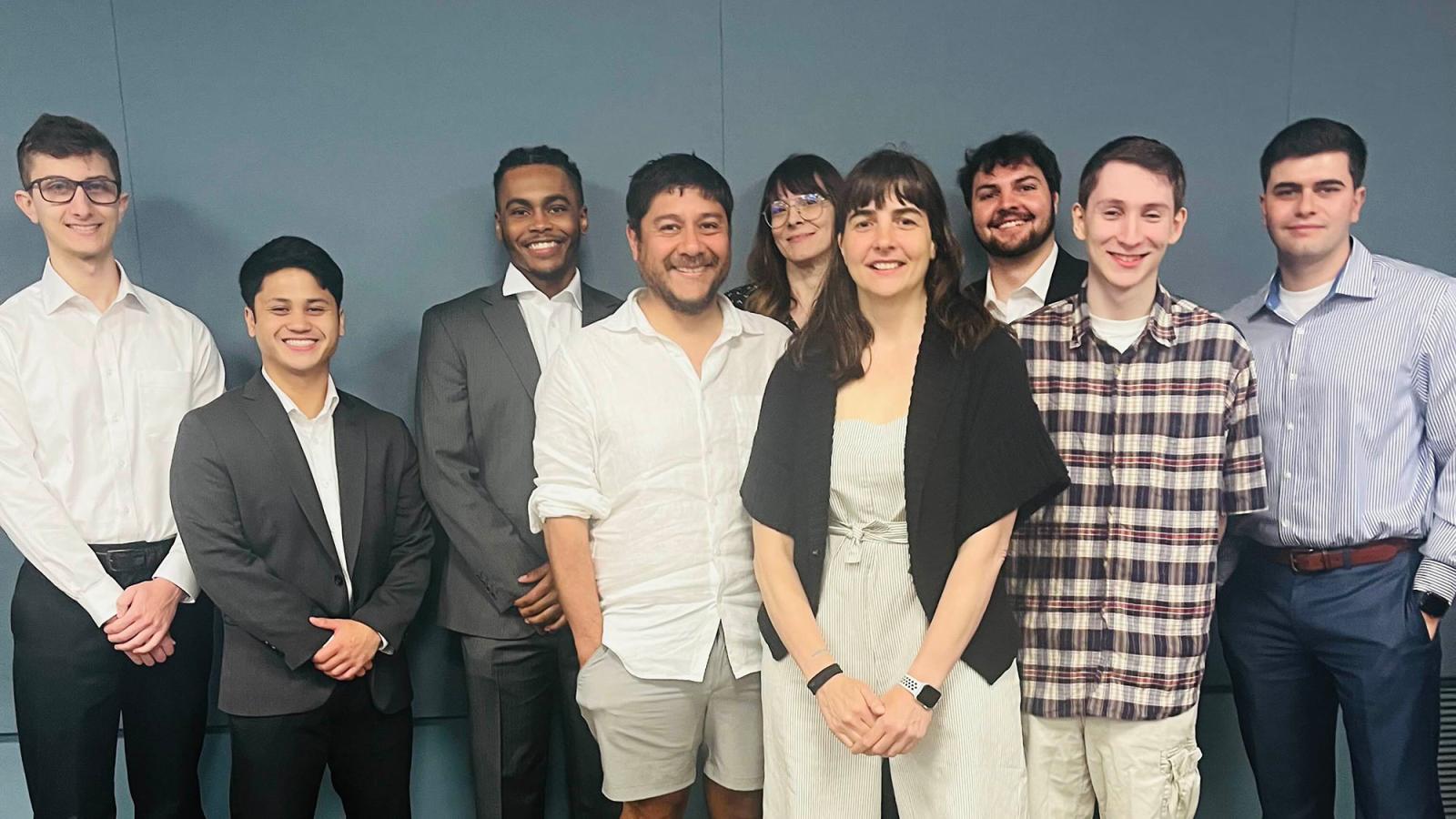
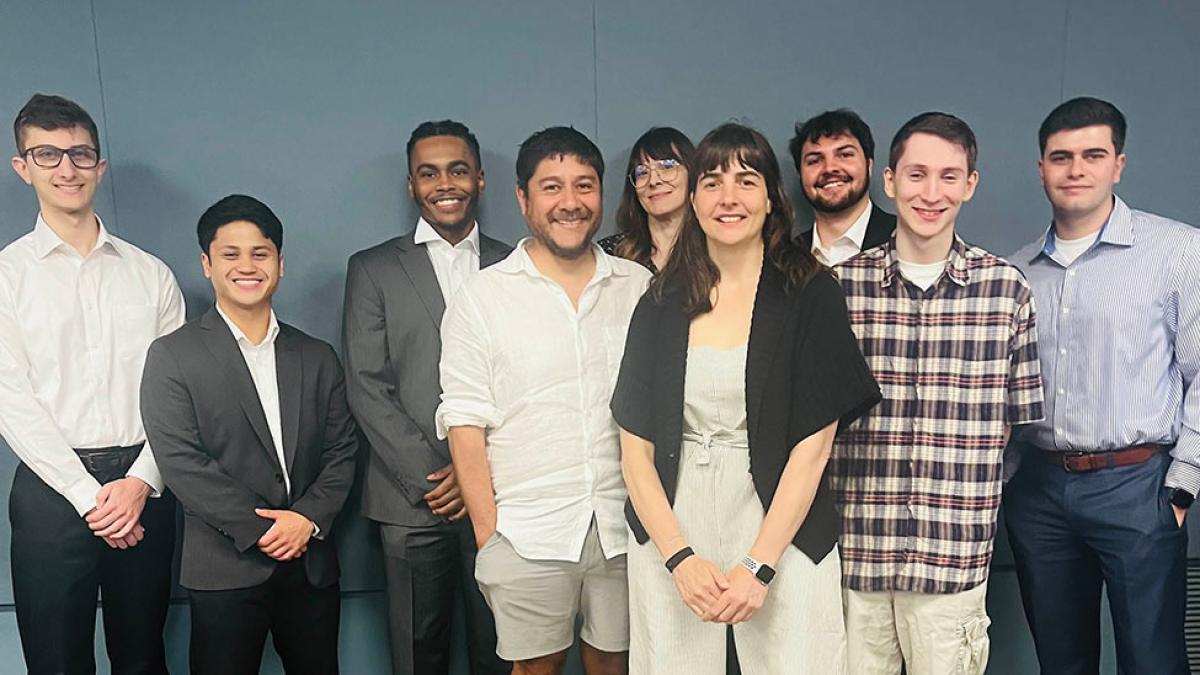
For the past five years, Kathy Winsted, PhD, has connected her digital marketing students with local small businesses. Her goal is to give her students invaluable real-life experience as they apply their learning to a practical situation, while offering small businesses a free audit of their marketing strategies.
This spring, one of the businesses that students collaborated with was Twenty Sided Store, a board game shop and event venue in Brooklyn. Two groups presented their ideas for how Twenty Sided could continue their marketing efforts, including search engine optimization, expanded social media content calendars, and custom bots powered by Chat GPT to run analytics. One group even reached out to potential influencers and began negotiations for influencer deals.
I felt like I actually got a lot more experience out of it than I would in a hypothetical case study. —Derasmo
For Mike Derasmo '24, a recent Global Marketing Management graduate, the project was a unique opportunity. "It was definitely interesting to work with a real small business,” he said. “It was a lot more interactive and hands-on. I felt like I actually got a lot more experience out of it than I would in a hypothetical case study.”
This takeaway is exactly the reason Winsted continues to team up with businesses for this project. “I'm a huge believer in learning by doing,” she said. “Students have to not only learn the course material but figure out how to apply it to a specific business situation. You can only learn so much by watching a video. Real learning happens when you have to create an ad or present Google analytics findings to a real client."
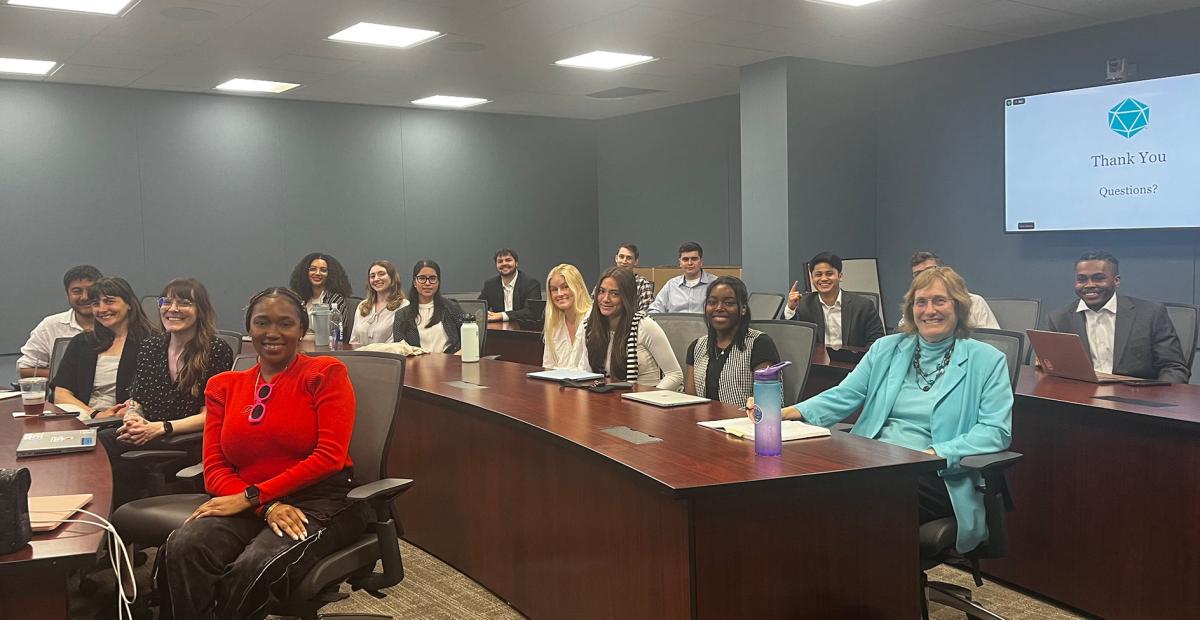
Morgan Beetham, who leads Twenty Sided’s marketing efforts, was thrilled to get outside input on the work the Twenty Sided team has put in over the past 13 years they have been in business. "Seeing our business through the eyes of someone navigating our website for the first time was really helpful,” she says. “The students at Pace had some great ideas for ways to reach a younger generation and clarify our brand."
I'm a huge believer in learning by doing. —Winsted
Lauren Bilanko, co-owner of the store, wasn’t sure what to expect from the final presentations and found herself excited by the enthusiasm and efforts of the students, who went above and beyond to understand their business. “The amount of research and development the students did to evaluate our marketplace was impressive,” she said.
At the end of the class, the Twenty Sided team left with a whole new perspective and a list of potential, actionable items. According to Beetham, “I've already started implementing a posting schedule more in line with their suggestions.”
Professor Winsted has developed a great program that mutually benefits both the students and small businesses like ours. —Bilanko
Students had the opportunity to not only apply their learning to a real-life scenario but practice their skills collaborating with and pitching to a real client. Derasmo cites it as a transformative experience, saying, “It's definitely helped me prepare for a professional career. Whether it’s applying the skills I learned to a new job, or even creating my own company now that I’ve seen how all these decisions get done. It was a great experience to have.”
Bilanko agrees, seeing the value not just to businesses like hers, but through the enthusiasm of the Pace students. "Professor Winsted has developed a great program that mutually benefits both the students and small businesses like ours. We hope to be invited to participate again next year."
More from Pace Magazine
What does it mean to learn in an AI-driven world? Pace University staff, faculty, and leadership weigh in on the concerns, challenges, and opportunities that AI presents for students, both during their education and within future careers.
At Pace University, we're redefining humanities education to meet the needs of the 21st century. Through hands-on community projects, research-based course experiences, and a focus on digital humanities, we're preparing graduates to be leaders and innovators. Our mission is to link curiosity-driven learning with real-world impact, creating a future where knowledge truly pays the best interest.
From the uplifting words of LaChanze to the accolades for our esteemed honorees, Pace University's Commencement was a day to remember. We celebrated 4,093 graduates at the USTA Billie Jean King National Tennis Center, marking a new chapter filled with promise and potential.
The Highs and Lows of Voice Pitch
Why do humans speak the way they do? College of Health Professions Associate Professor Sethu Karthikeyan, PhD, is exploring the evolutionary biology behind voice pitch.


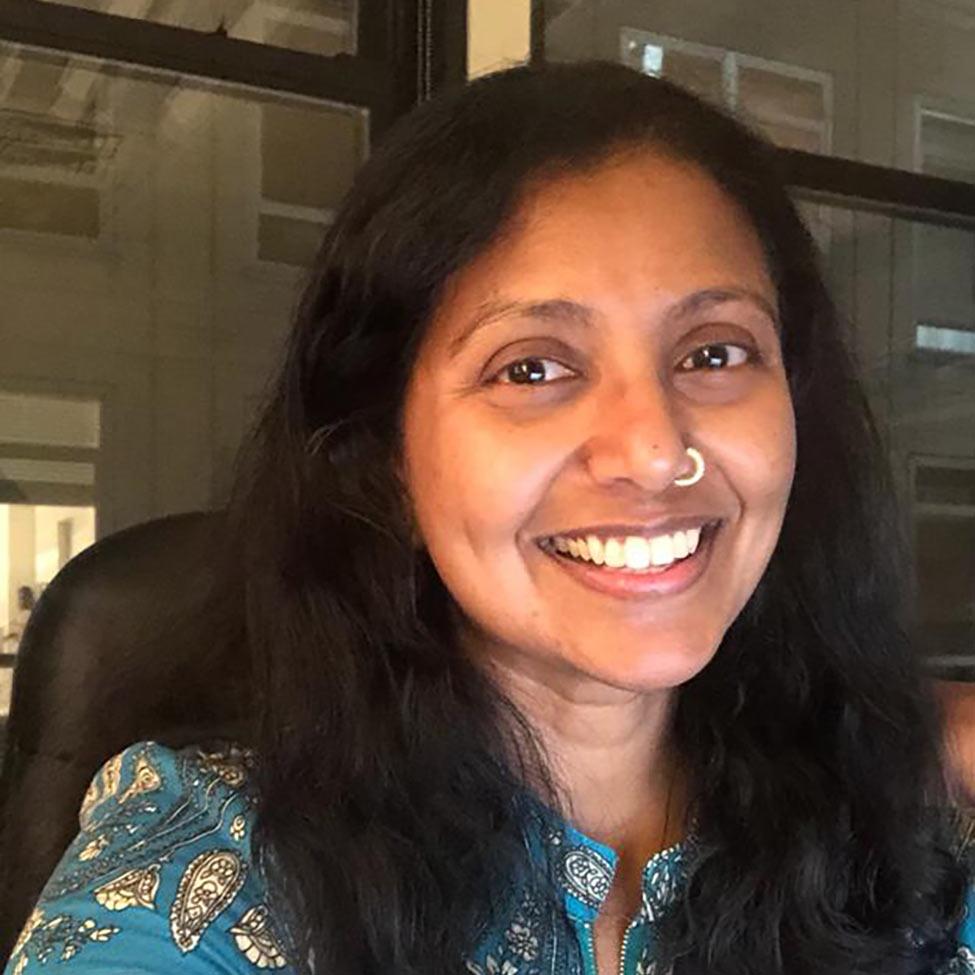
“I’m always interested in some aspect of us. What makes humans tick? Why are we the way we are?”
While some aspiring academics gravitate towards established topics or research labs, College of Health Professions Associate Professor of Communication Science and Disorders Sethu Karthikeyan, PhD, took a different route. She has spent her academic career exploring topics in which she is curious and intellectually consumed by, no matter the external interest—a route that by her estimation has been a bit more circuitous, but one that has been rewarding at every step along the way.
Primarily, Karthikeyan has used speech and language as a tool to better understand human nature. Says Karthikeyan, “It’s so broad and multidisciplinary, so the question is the king. It drives your literature review, and you really have to dip into psychology, biology, anthropology, and sociology and integrate them into your work.”
“It’s so broad, so multidisciplinary, so the question is the king. It drives your literature review, and you really have to dip into psychology, anthropology, and sociology and integrate them into your work.”
Recently, she’s been exploring the phenomenon of voice pitch in relation to sexual preference. As Karthikeyan explains, on average, men have a vocal fundamental frequency (objective measure of voice pitch), that is five standard deviations below the female vocal pitch. This dimorphism, as it's called, is not unique to humans. However, the unusually high degree of dimorphism among apes suggests that this is not just something we’ve inherited, but has also been a target of evolutionary selection.
For Karthikeyan, the main question is: why?
“Men with deeper voices may be attractive to potential mates because it is associated with some aspect related to health, physical formidability, social competence and/or status. This may have been a female mate preference beneficial in ancestral environments. That’s based on the intersexual selection proposal by Darwin,” explains Sethu. “The other argument is that it could be a result of male-to-male competition, i.e., intrasexual selection, where individuals of the same sex compete against one another for highly sought after resources, including mates.”
According to Karthikeyan, it appears both these mechanisms factor into why the dimorphism in voice pitch exists—just with one of those factors being arguably a bit more prominent as detailed in the theoretical piece by David Puts (2010) and further supported by a recent study by his team (see Aung et al., 2023).
“What’s interesting is when we consider the two mechanisms together, intrasexual competition appears to be the stronger driving force. For example, the lowering of men’s voice pitch has larger effects on perceptions of dominance than attractiveness.”
Karthikeyan sees this review as a launching pad to explore other avenues of related research, such as how social context may make one change their voice pitch and other aspects of speech such as articulation and fluency and how these could influence one another.
“It is important to remember that the social context makes one change one's voice,” she explains. “Pitch is determined by the size of my vocal folds, but how much I tense or relax my folds, which affects pitch modulations, could depend on the context that is triggering my physiological response, for example, stress levels. Also, changes in vocal pitch seem to be associated with other psychological measures that look into your propensity to empathize with others, just to cite one example.”
Karthikeyan is excited to continue to delve into complex questions at the intersection of communication sciences and disorders and evolutionary psychology. She is currently exploring how articulation may change based on cultural identities and conversational partners, evaluating how foreign-accented and native-accented speakers accentuate or mitigate certain syllables in American English depending on their conversational partner. She’s also recently received approval for a book proposal alongside collaborators, Glenn Geher, Psychology department in SUNY New Paltz, and Andrew Gallup, Behavioral Biology Program at Johns Hopkins, which would take the form of an evolutionary psychology handbook, an edited volume published by the Oxford University Press.
All in all, Karthikeyan hasn’t stopped following her curiosity—and by doing so, has set an admirable example for her students and colleagues alike
“I need to be very curious about the research question; and need to make sure I have the space to think independently about everything leading to that question without falling into the trap of blindly following mainstream narratives. I’ll always ask myself; why did I get into this in the first place?”
More from Pace Magazine:
Pace’s Sands College of Performing Arts is getting a brand new, state-of-the-art Performing Arts Center at One Pace Plaza East. This ambitious project will feature cutting-edge classrooms, creative arts spaces, and a premier Performing Arts Center, making Pace University a hub for the arts.
With projects designed to restore our ocean’s coral reefs and improving clean water accessibility–and two $15,000 grants to boot–Pace students are generating creative solutions to combat climate change.
Sands College of Performing Arts has a new faculty member, who you may know from her many starring and scene-stealing roles over the years. Meet Professor Kathleen Turner, who shares her passion for teaching in a candid Q+A.
Summer 2024: Leadership Letter
From campus renovations to pioneering research, the Summer 2024 edition of Pace Magazine captures the vibrant spirit and accomplishments of our community. We are proud to share stories of our top-ranked Environmental Law program, new faculty members, and much more.
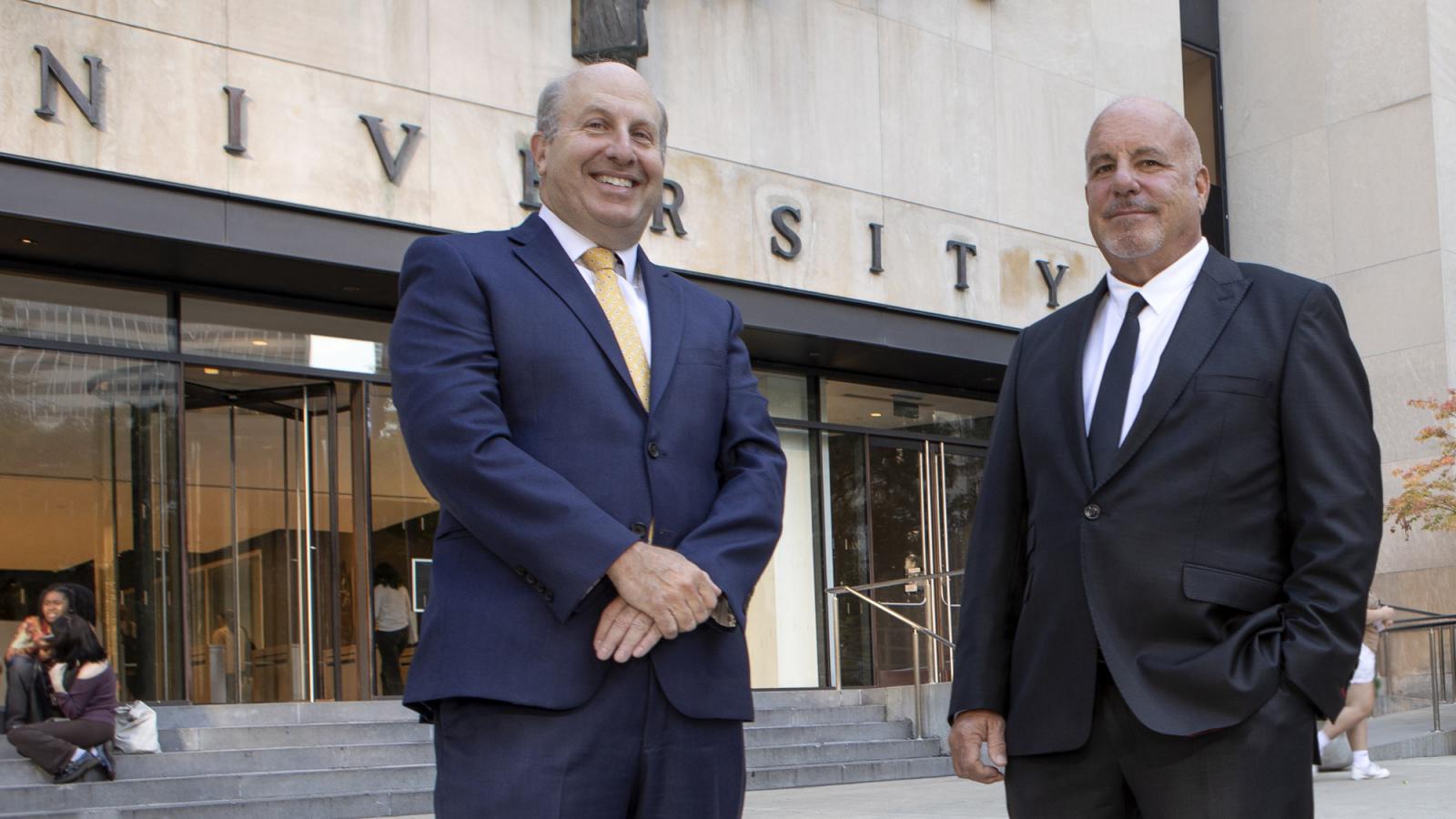
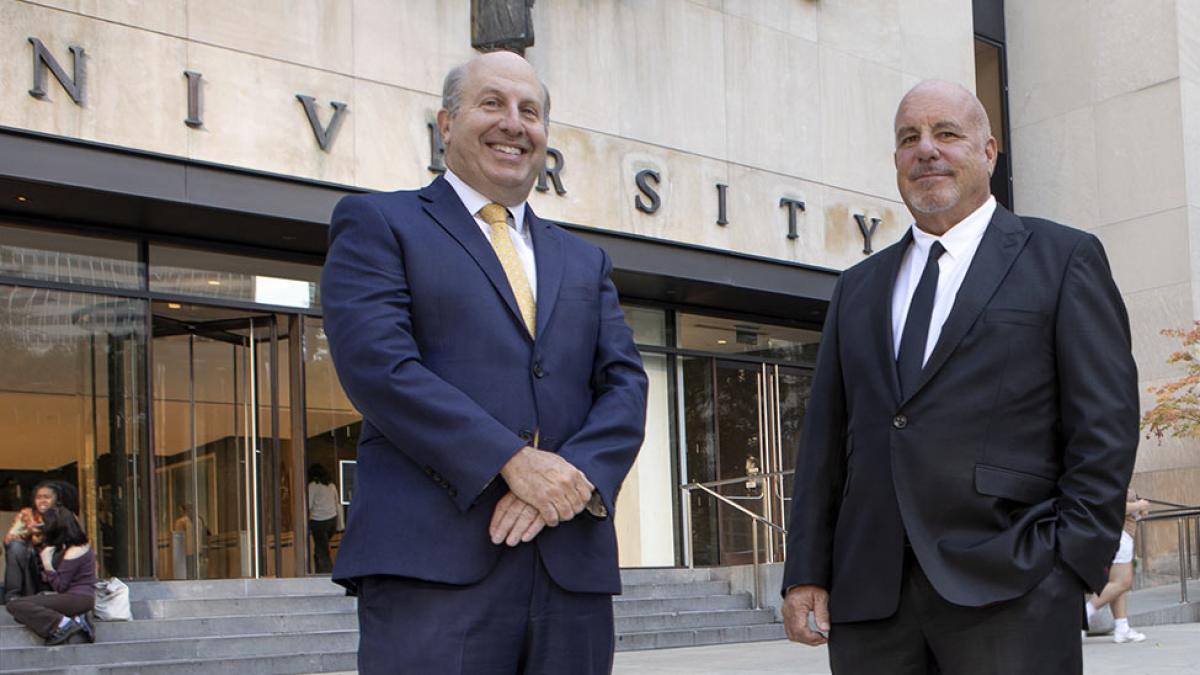
As we step into another exciting chapter in Pace University's history, we are thrilled to share with you the Summer 2024 edition of Pace Magazine. This edition is a testament to our continuous commitment to academic excellence, innovation, and Pace’s driving mission of Opportunitas.
This summer, our campuses are buzzing with energy and transformation. We are making significant strides in enhancing our student spaces through ongoing construction and renovations. These improvements are designed to provide an even more enriching environment for our students, ensuring they have the best facilities to support their academic and extracurricular endeavors.
From leading the charge in integrating Artificial Intelligence across disciplines to fostering a profound understanding of civil rights history through interdisciplinary field studies, our faculty and students are continually pushing the boundaries of knowledge and impact.
We are incredibly proud of our Elisabeth Haub School of Law, which has once again been recognized by U.S. News & World Report as the nation’s top program for Environmental Law. Achievements like these reflect the hard work and dedication of our faculty and students and underscore the excellence of our legal education.
Civic engagement remains at the forefront of our mission. We recently celebrated a historic milestone as our students voted on campus for the first time, enhancing voter accessibility and engagement.
These results have not gone unnoticed. The extraordinary success of the 1906 Challenge and the recent Spirit of Pace Awards showcases the strength and generosity of our Pace Community.
In this edition of Pace Magazine, you will also find stories of our groundbreaking research, inspiring updates from our alumni, and insights into the innovative programs shaping the future of our students. From the new game development major fostering a vibrant community to our impactful digital marketing class making real-world impacts on local businesses, there is much to celebrate.
We are honored to welcome new faculty members who bring a wealth of knowledge and experience to our community, including acting luminary Kathleen Turner at the Sands College of Performing Arts.
As we reflect on these accomplishments and look forward to new horizons, we remain steadfast in our mission to provide a transformative education that prepares our students to lead and innovate. Thank you for being an integral part of Pace. Together, we continue to make a difference.
Warm regards,
Marvin Krislov
President
Rob Sands, JD ’84
Chair, Board of Trustees
More from Pace Magazine
What does it mean to learn in an AI-driven world? Pace University staff, faculty, and leadership weigh in on the concerns, challenges, and opportunities that AI presents for students, both during their education and within future careers.
Pace’s Sands College of Performing Arts is getting a brand new, state-of-the-art Performing Arts Center at One Pace Plaza East. This ambitious project will feature cutting-edge classrooms, creative arts spaces, and a premier Performing Arts Center, making Pace University a hub for the arts.
At Pace University, we're redefining humanities education to meet the needs of the 21st century. Through hands-on community projects, research-based course experiences, and a focus on digital humanities, we're preparing graduates to be leaders and innovators. Our mission is to link curiosity-driven learning with real-world impact, creating a future where knowledge truly pays the best interest.
The Future of Humanities at Pace
At Pace University, we're redefining humanities education to meet the needs of the 21st century. Through hands-on community projects, research-based course experiences, and a focus on digital humanities, we're preparing graduates to be leaders and innovators. Our mission is to link curiosity-driven learning with real-world impact, creating a future where knowledge truly pays the best interest.
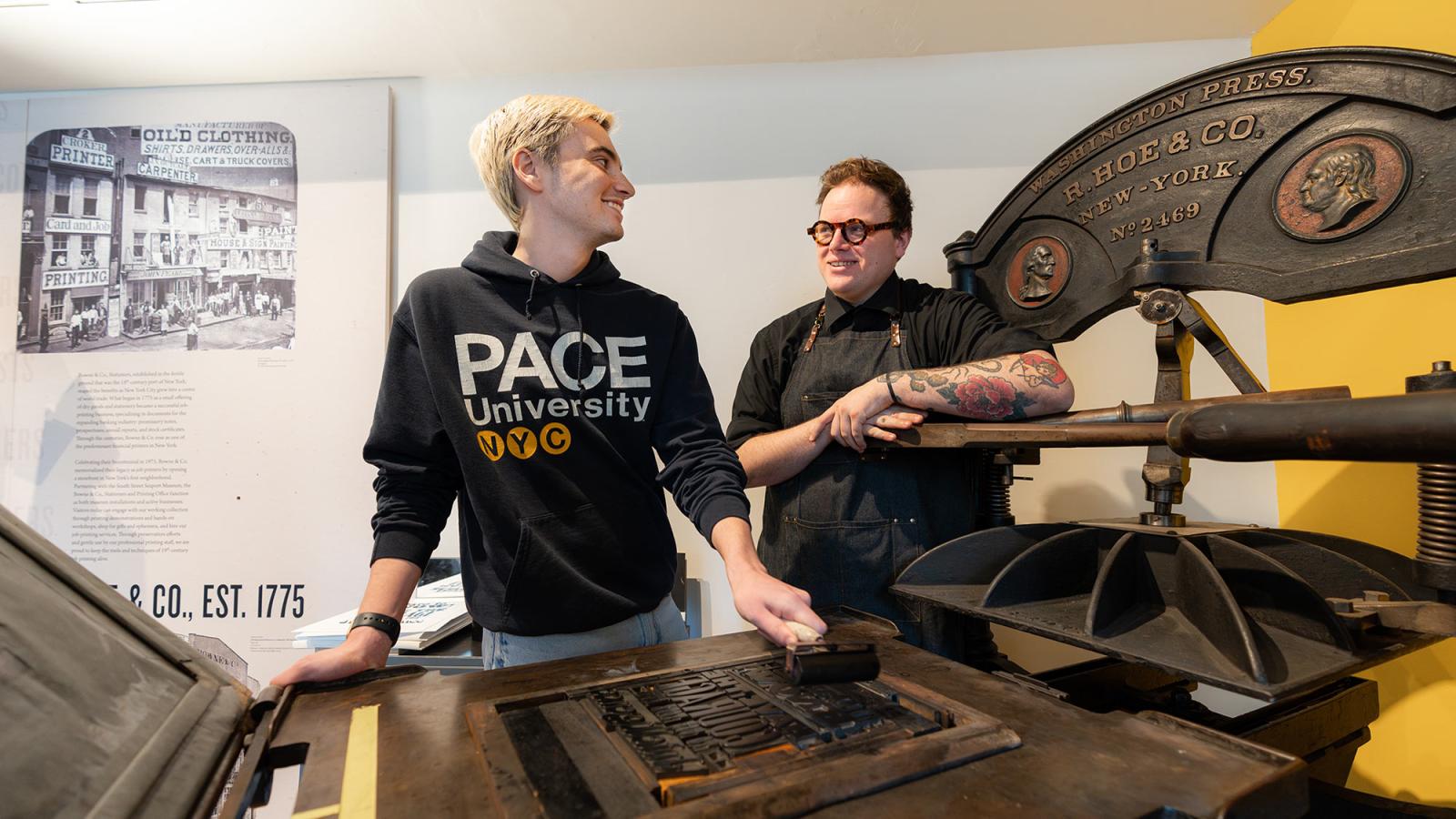
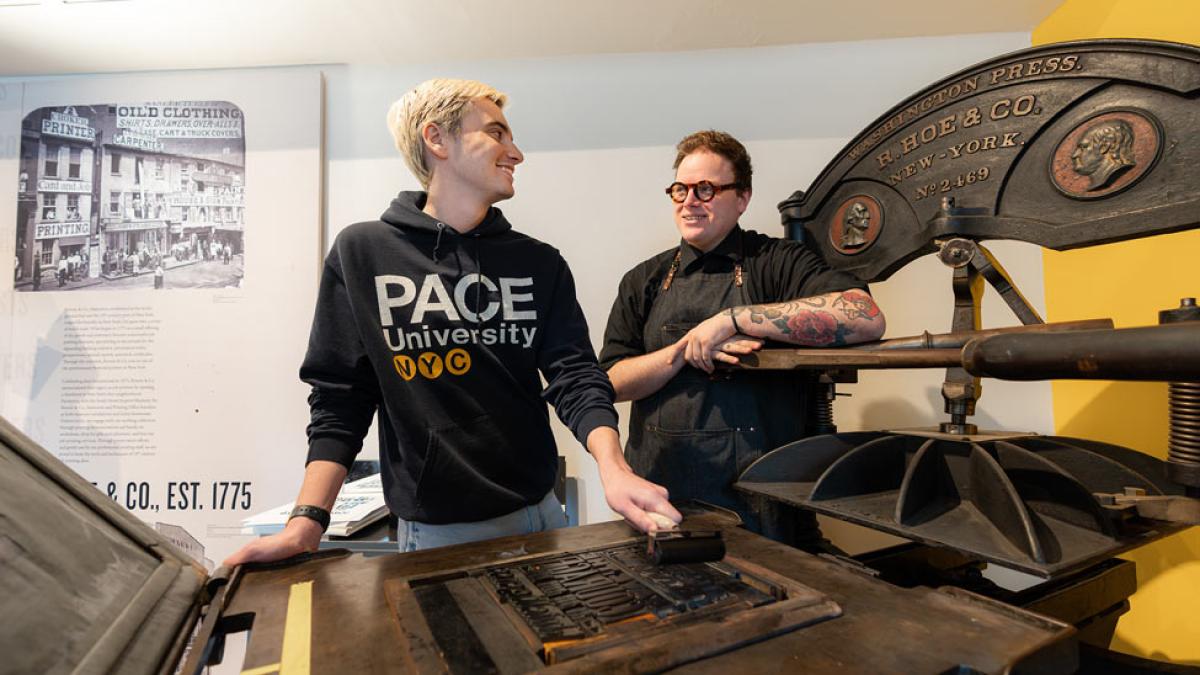
“An investment in knowledge pays the best interest.”
The above quote is not in fact from an algorithm-chasing social media influencer; but rather from one of the original influencers of the United States of America: Benjamin Franklin.
In many respects, the concept of higher education has long been about this simple premise. Picture the first-year student who has had their world entirely rocked by a new political idea. Or a group of budding friends staying up late into the night, fiercely debating the concept of free will. Young minds, completely electrified by an environment of intellectual curiosity, where knowledge is pursued for knowledge’s sake with the general understanding that it will pay off later.
For many reasons, this idyllic notion of college life does not necessarily reflect the higher education experience of today. For one, this type of education was largely only ever available to a privileged segment of society. And between rising costs, the ever-changing economy, and the competitive nature of the marketplace, this type of mindset may simply be impractical and outdated; there can only be so much leisurely intellectual exploration when employers are demanding, well, everything from today’s new grads.
Yet in a perpetually changing world, this essence of a college education—which can be broadly defined as well-rounded education in the humanities—may be more important than ever. Because in a world where technology is evolving by the nanosecond and our interconnected global world is yielding dilemmas more complex than ever, there is one skill that will always stand out amidst the ever-growing minefield of rising disinformation, distraction, and future unknown obstacles: The ability to think.
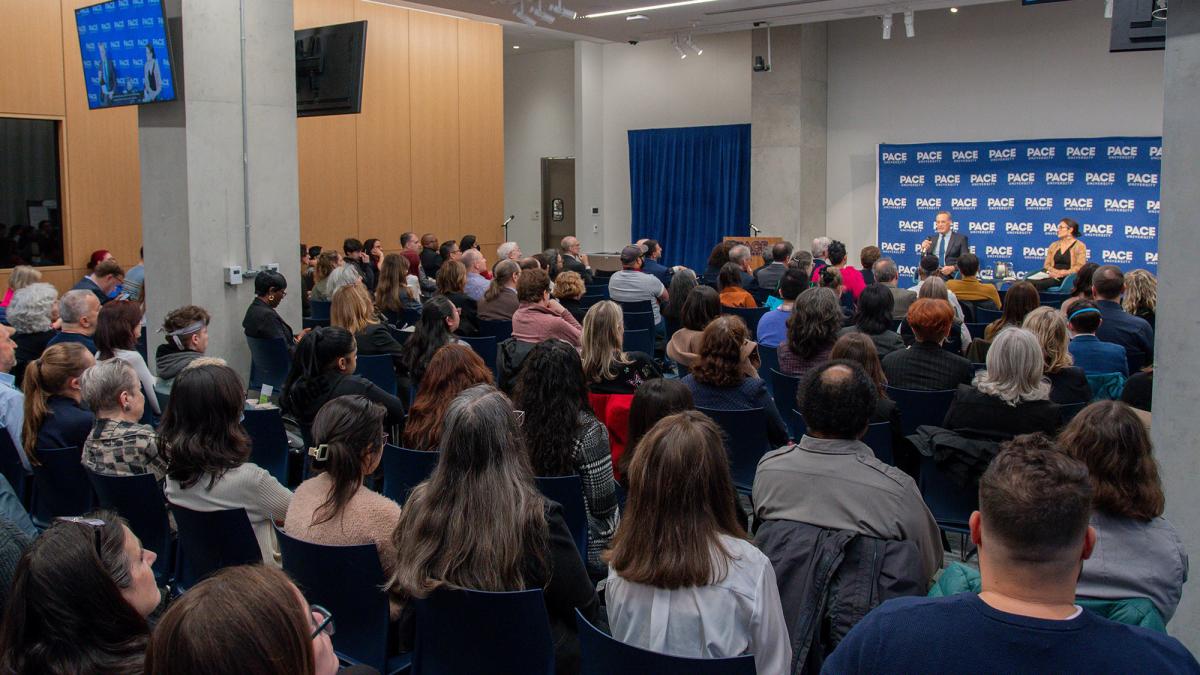
Humanities at Pace: The Experiential Way
“We are a leader nationally in building what we call experiential humanities–where we empower students to learn by doing. This is a shift away from the historical model of universities of a one-way flow of information.”
These are the words of Kelley Kreitz, PhD, director of Experiential Learning at Pace and associate professor of English within the Dyson College of Arts and Sciences. Kreitz has been instrumental in bringing humanities education into today’s classrooms in a way that is both relevant and engaging. She’s been working diligently with University faculty and with large organizations such as the National Endowment for the Humanities to bridge innovative learning concepts with the funding to make them happen.
This February, for example, Pace was one of only 30 Universities in the nation to be awarded $350,000 from the National Endowment for the Humanities through two grants to fund the creation of new curriculum, teaching spaces, and projects that highlight the stories of marginalized people in the historical record through a series of public projects. The first of these grants, led by Kreitz along with Assistant Provost for Research Maria Iacullo-Bird and Professor Sid Ray, will fund an initiative titled The Ground Beneath Our Feet: Centering Place-Based Humanities in the Curriculum, which recognizes the location of our New York City Campus on unceded Lenape land near the African Burial Ground–at the convergence of Chinatown, Civic Center, Financial District, and the Seaport. The project will support courses specifically dedicated to advance experiential learning in humanities courses in partnership with a Lower Manhattan Humanities Consortium of cultural and service organizations in Pace’s backyard.
“We are a leader nationally in building what we call experiential humanities–where we empower students to learn by doing. This is a shift away from the historical model of universities of a one-way flow of information.”
The Ground Beneath Our Feet project presents an opportunity on an unprecedented scale through LMHC partnerships to excavate the layered, intersecting, and often conflicting histories of Lower Manhattan,” said Assistant Provost Iacullo-Bird, who is also the President of the national Council on Undergraduate Research (CUR). “Undergraduate research will be embedded throughout the project in developing new interactive, research-infused, and immersive experiential learning.”
One aspect of this initiative is the upcoming launch of the specialized digital mapping platform, The Ground Beneath Our Feet, which will house classroom-based initiatives ranging from an exploration into New York City’s 19th-Century Spanish-Language Press, taught by Kreitz, an oral history and archival project surrounding the impact of Super Storm Sandy in Lower Manhattan taught by Professor Erica Johnson, an investigation of mutual aid networks in New York City taught by Professor Meghana Nayak, and an exploration of arts and cultural organizations of the Hudson Valley taught by Lecturer Alysa Hantgan. Through these semester-long studies, students will be able to leverage today’s technology, engage in real-life learning in spaces of historical significance, interact with local communities, and partake in more traditional classroom elements such as close analysis of texts to, as Kreitz notes, “put our past in conversation with the present.”
The Ground Beneath Our Feet is just one of many experiential learning programs happening at Pace. Over the next few years, the University is dedicated to expanding this classroom-based model, and a considerable number of classes in topics ranging from "African Burial Ground and Slavery in NYC," currently under development by Adjunct Professor Tamara Kelly, to a course centered around Chinatowns in the Americas, developed by Associate Professor Stephanie Hsu, will empower students to engage heavily with historic locations right in our community. Recently, the National Humanities Alliance, featured the University’s Writing for Diversity and Equity in Theater and Media program in a report on diversity in the humanities for the program’s combination of humanities and theater courses, as well as hands-on professional development experiences with working professionals through master classes and field trips.
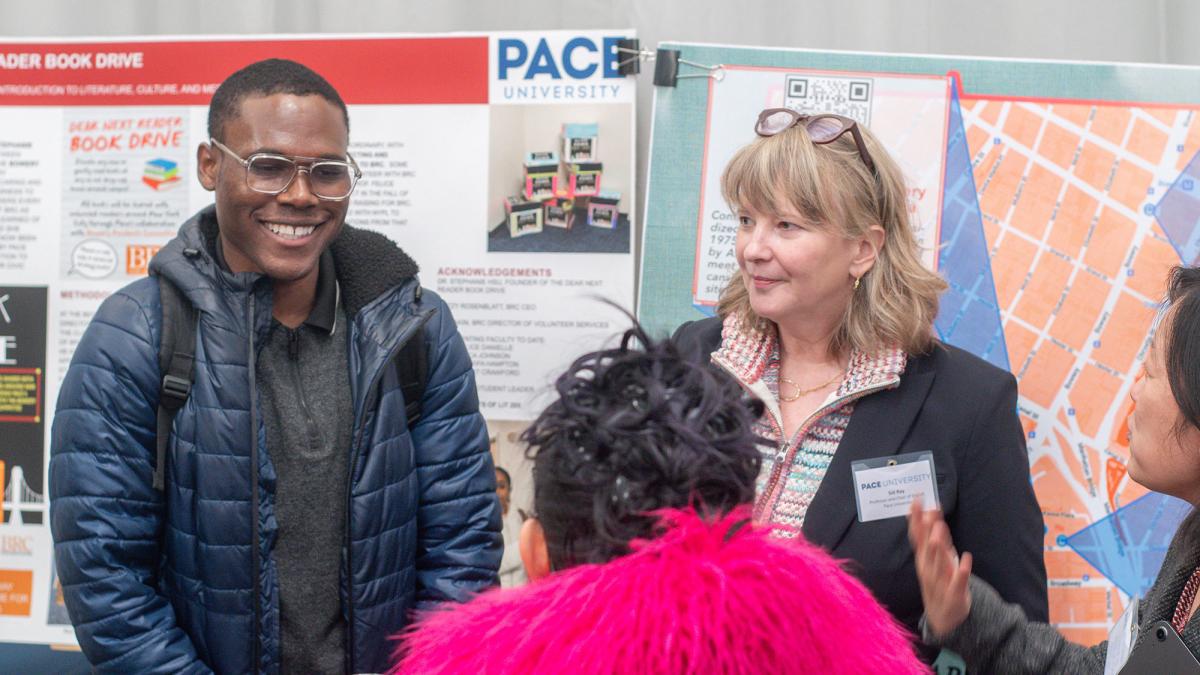
In addition, a new Makerspace and Humanities Lab funded through a second NEH grant, led by Kreitz; professors Luke Cantarella and Charlotte Becket; and Vice President for Development and Alumni Relations Gary Laermer ‘80, and Director of Campus Planning Wayne Chen, will support courses in our humanities majors and our experiential liberal arts core that invite students to explore and present their ideas through critical making practices, such as bookmaking and other forms of fabrication. The new space will also provide students with access to historical small-press and DIY publications from New York City through our Pace Zine Library collection, co-founded and co-directed by Instructional Services Librarian Susan Thomas and Clinical Assistant Professor Derek Stroup. These and other initiatives show that when it comes to giving the Humanities a modern makeover, we’re just getting started.
A Research-Based Approach
A humanities education can propel innovation and advancement that drives today’s knowledge economy. In Pace’s experiential model, traditional humanities skills such as close and contextual reading come together with research projects that employ digital and public humanities methods, including visualizing communities represented by archival materials, making visible absences in the archival record, and engaging academics, students, and the public in contemplating history and its relationship to present challenges.
For example, students in a recent civic engagement section of a core curriculum course called Modern Latin America, taught by University associate professor and Project Pericles Fellow Michelle Chase, students are partnering with a local nonprofit, the North American Congress on Latin America (NACLA), an organization dedicated to advocating for social justice throughout the Americas, focusing specifically on Latin American migration to the United States, and U.S. foreign policy toward Latin America. Students in the course combine the academic portion—studying recent history of Latin America—with civic engagement, exploring significant events in Latin America through NACLA’s archives, located in Washington Square, which include photos of Fidel Castro speaking at a rally in Cuba, protests in Puerto Rico, and agricultural projects in Mexico.
Through Pace’s experiential learning ethos and emphasis on the digital humanities, we’re placing those timeless principles of a traditional humanities education within the boundary-pushing, future-forward potential of 21st century classrooms. This is a model with relevance for humanities majors, as well as for students who encounter humanities courses through our experiential liberal arts core.
A Competitive Advantage for All Students
A strong humanities education is not just for the English or Art History majors at Dyson. Rather, it’s a throughline across all of Pace’s schools and departments.
“The humanities play a key role in education, especially for those of us teaching students to solve problems using technology,” says Seidenberg Clinical Professor of Information Technology Andreea Cotoranu, PhD. “They provide essential context and understanding of the human condition, fostering critical thinking, empathy, and ethical considerations.”
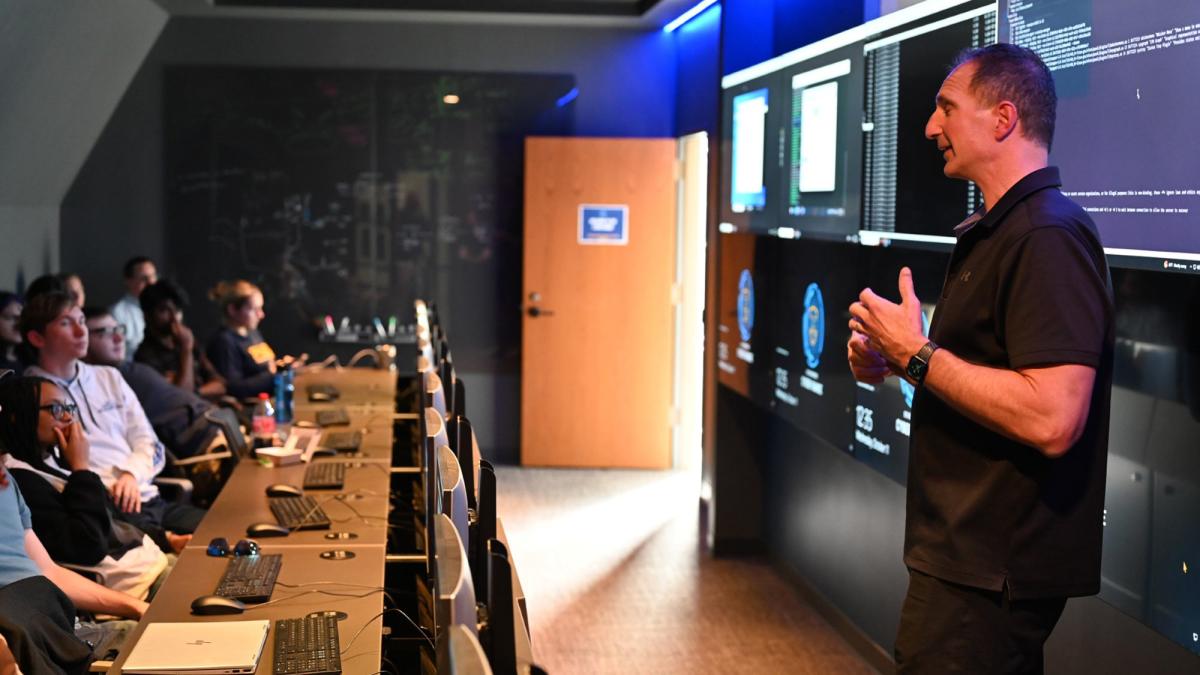
For example, consider the soon-to-be-launched Humanities, Art, and Computing minor, housed both in Seidenberg and Dyson. Specifically designed to merge the digital humanities with equity-centered design thinking, the program will employ the use of new technology, advanced computing, and public engagement to investigate and analyze questions in the humanities.
Says Kreitz, “My position has always been that the traditional and digital humanities have to work in tandem with each other. There’s no world in which I can make sense of what I’m able to access through a digital map, for example, without the type of close and contextual reading—and discussion-based learning—that’s always been part of the humanities.”
“It’s not a replacement,” she adds. “But it’s a rethinking.”
At Pace, this “rethinking” of humanities is popping up everywhere. Consider our School of Education, where classroom content is often reverberated into the classrooms of the future.
“At schools and universities we tend to divide the human experience into math, science, language arts, but that’s very artificial because our life experience, everything is integrated.” says School of Education Professor Peter McDermott, PhD.
McDermott, alongside School of Education Professor Sharon Medow, MSEd conceived the course Teaching 212: Understanding the Potential of the Humanities and Creative Arts in Children’s Education and Development. This course, which includes an experiential learning element related to the many museums and cultural centers of New York City, examines how the arts can provide children opportunities for using culturally-based sign systems for composing meaning, interpreting, and analyzing their worlds.
In many respects, its aim is simply to help children understand the world and their place in it.
“The humanities have tentacles in so many different disciplines; they give us so many wonderful opportunities to think about ourselves and our place in the world, but also to learn about others,” says Medow. “I think we need the tech tools, but there’s nothing more important than the human experience. And there’s richness to that.”
The Humanities for Career Outcomes
As per a New Yorker article in 2023, the study of English and history at the collegiate level has fallen precipitously over the past decade, dropping by approximately one-third. While this is not the case at Pace University—in fact, we’re seeing a significant year-over-year increase in English majors, up 47% over the past few years to more than 200 majors—the trend nationwide is difficult to ignore. Universities are increasingly moving away from foreign language programs, realigning humanities departments entirely, and simply not devoting resources to the humanities, despite its long-standing status as a crucial pillar of academia.
Is this a mistake?
According to a 2020–2021 study by the Association of American Colleges and Universities, 95% of employers prioritize hiring candidates with the intellectual and interpersonal skills that will help them contribute to innovation in the workplace. A further 93% of employers indicated that candidates’ capacity to think critically, communicate clearly, and solve complex problems is more important than their specific undergraduate major.
In other words: to win over employers upon graduation, a strong grounding in the humanities is arguably more important than ever.
This sentiment has been echoed by Pace’s Career Services, which partners with the comprehensive career management tool Handshake to attain market insight and connect students to its 750,000+ employer network. In a recent joint study with Handshake and the Society of Human Resources Management that investigated how employers evaluate emerging talent, soft skills topped the charts.
Phyllis Mooney, Pace's AVP and Executive Director of Career Services and Employer Relations noted in reference to the study, "Among the top 6 skills employers seek in college students entering the workforce, 81% cited communication skills and 77% critical thinking. This mandate is what we hear time and time again from employers."
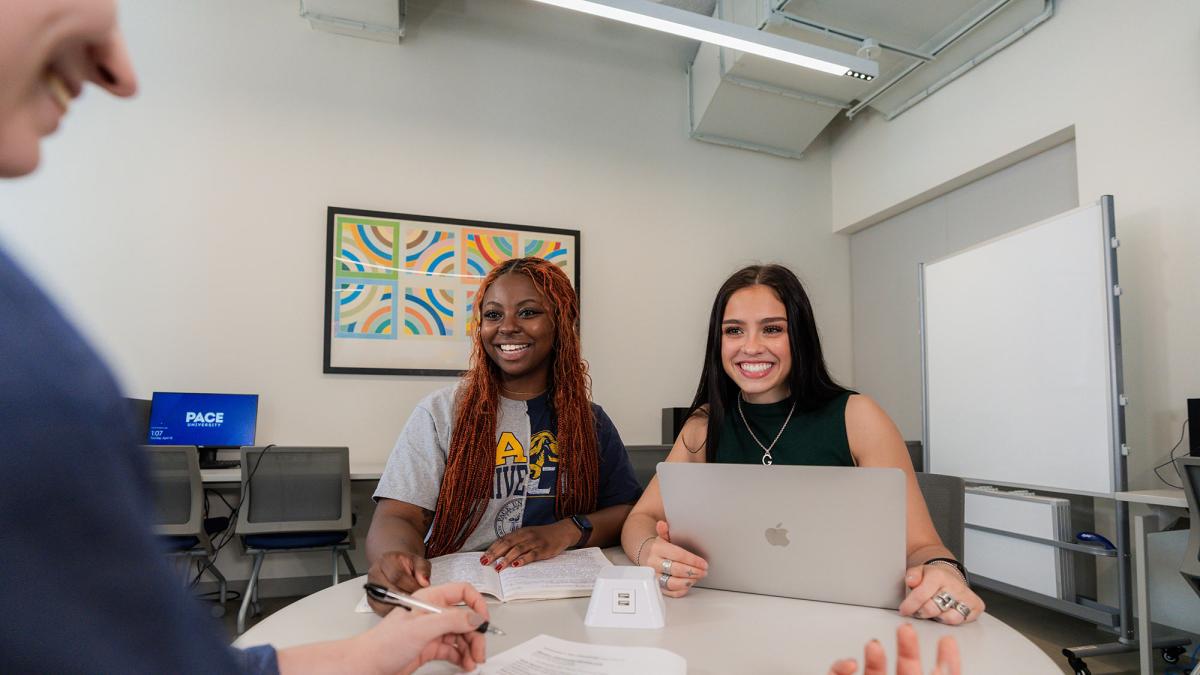
"There is no job, not even the most technical, that cannot be improved by the position holder having excellent communication and critical thinking skills," she added. "That is why at Pace, we provide a strong liberal arts foundation for all our majors, even ones outside of the Dyson College of Arts and Sciences."
While the technical skills to excel at a job are certainly important in getting your resume noticed, perhaps the best return on investment is an education that offers more than just the hard skills. At Pace, we’re also equipping our grads with the soft skills they need to help them thrive in their careers.
“A liberal arts education provides our students with a competitive advantage,” says Kreitz. “Being able to demonstrate skills in writing, communication, collaboration—these are all skills that we know help students get higher salaries on average when they graduate from college. Importantly, these are also skills that empower students to grapple with today’s pressing challenges within and outside the workplace, and ultimately to live fulfilling lives.”
Putting it All Together
Go back to the students invigorated by a compelling political or philosophical idea, talking late into the night. Now, place them within the context of an experiential, interdisciplinary education that enables students to truly grapple with deep questions in texts and in real-world settings.
At Pace, it is our mission to link these things in a way that is not only captivating but enables students to make a positive impact in their daily lives and in their careers as future leaders; to provide students with an investment in knowledge that, as Ben Franklin would appreciate, truly does pay the best interest. That’s the Pace difference.
“Our approach to experiential humanities is about empowering students to explore their curiosity–and ultimately to learn in a way that makes them partners in producing knowledge about the past and putting, in conversation with present challenges,” concludes Kreitz. “Ultimately, we are preparing students to create the future in which they want to participate.”
More from Pace Magazine:
Discover incredible stories that showcase the amazing achievements and initiatives happening at Pace. From top rankings to groundbreaking programs and student journeys, there’s something to inspire everyone.
Pace’s Sands College of Performing Arts is getting a brand new, state-of-the-art Performing Arts Center at One Pace Plaza East. This ambitious project will feature cutting-edge classrooms, creative arts spaces, and a premier Performing Arts Center, making Pace University a hub for the arts.
With projects designed to restore our ocean’s coral reefs and improving clean water accessibility–and two $15,000 grants to boot–Pace students are generating creative solutions to combat climate change.
